How to Map BPMN Patterns & Examples into Tallyfy?
Learn how to Map BPMN Patterns & Examples into Tallyfy? Gain insights into best practices and real-world examples.
Summary
- BPMN worked for factories, not modern teams - Built for 18th century factory work, BPMN fails when workers need flexibility, mobile access, and the ability to handle exceptions that rigid flowcharts cannot anticipate
- Documentation doesn’t equal improvement - BPMN solves process documentation but makes actual change hard, requiring specialists to redraw diagrams for small modifications instead of letting people doing the work improve it in real-time
- Tallyfy replicates all BPMN patterns with modern simplicity - Every common BPMN pattern (sequence, parallel split, exclusive choice, tiered approval) has a Tallyfy equivalent that works on phones and can be exposed to clients, not just internal process experts
- Need help moving beyond legacy BPM? See how Tallyfy modernizes workflow management
First - let’s get some context.
BPMN is used by legacy BPM software tools. In today’s age, it’s a great idea to start moving away from BPMN for these very compelling reasons. In discussions with operations teams - which account for about 17% of our conversations with financial services and 10% with professional services firms - this has become one of the most common topics:
-
BPMN is not for modern work. BPMN worked when everyone was in a factory in the 18th century. These days, most workers are team workers - which explains the gigantic explosion of communication and collaboration tools in the workplace. People want something that’s structured, but less rigorous. If you pay someone a six-digit salary - do you expect them to follow flowcharts? I think not.
-
BPMN can’t deal with every possible scenario. With BPMN it’s hard to deal with every possible exception/deviation from the “normal way”. With Tallyfy - you can use comments and report issues - to cater for scenarios which nobody anticipated before.
-
BPMN isn’t for modern devices and systems. If you’re using BPMN to publish process maps - it became obsolete when smartphones came out. Nobody is going to refer to a large, complicated diagram that could barely fit on an A2-size sheet of paper, let alone a 6-inch phone screen.
It is just awful to have to work with inside a prison of BPM abstractions and tools.
-
BPMN solves process documentation - not process improvement. That’s the gap. If you want to go from as-is into a to-be process situation, you need think practically. How can you make change, training and improvement in a process easy? Also - how can you involve the people who actually do the process to improve it? BPMN requires re-doing a process model, just to make a small change - which is often just for people who know BPMN. At Tallyfy, we’ve seen teams stuck in this loop for months - redrawing diagrams while the actual work stays broken. Tallyfy has built the simplest solution imaginable for getting real-time process feedback from the field.
-
BPMN can’t be exposed to external stakeholders. No one wants to see your complex, beautiful BPMN diagram. Teams care about a better experience. Tallyfy focuses on making processes so easy - that you can even share your process with external stakeholders. In contrast - BPMN is mostly focused on automating internal, repeatable processes.
-
BPMN doesn’t make following a process easy. BPMN, while being formal and proper - doesn’t solve the actual problem at work. The reason you map a process is so that people can follow it easily. BPMN is really for documentation. Real-life is usually totally different. Why invest in mapping via BPMN - when you know nobody will follow the process in real-life?
-
BPMN isn’t really a standard. Although it’s supposed to be a standard - many vendors create their own “flavor” of BPMN making migration between vendors a non-trivial task. We regularly hear from teams wanting to escape legacy BPMN tools like Signavio - the migration assistance they need proves just how locked-in these “standard” tools actually make you.
-
There’s some things BPMN can’t do at all - things that only Tallyfy can do. Read more about that here
As a developer I hated it… the skills were not marketable… Not a single interviewer knew what I was talking about with my BPM experience.
If you already use BPMN or are familiar with it - this guide was for you.
Tallyfy is the new way to map, track and improve processes. With financial services (17%), healthcare (11%), and professional services (10%) leading adoption, it’s built for anyone (including external stakeholders) - not just for process improvement professionals, IT staff or business analysts. In discussions with these teams, the most common complaint about legacy BPMN tools is exactly this rigidity problem.
A major Asian bank migrating 2,500 cash management users per batch discovered this firsthand. Their 6-stage migration process required coordination across seven teams - client migration, logistics, sales, account management, implementation, contact center, and e-payment registration. BPMN diagrams could document this complexity, but could never flex to handle the reality of “Top Tier” versus “Standard” treatment paths, rejected deals that needed parking and follow-up, or the token assignment and e-registration steps that varied by legacy system origin.
This articles defines known/common patterns in BPMN from legacy BPM tools. For each BPMN pattern, we’ve defined a Tallyfy equivalent that’s fit for modern work.
If you’re looking to move beyond legacy BPMN tools, here’s how Tallyfy approaches business process management differently:
Business Process Management Made Easy
Basic sequential and parallel patterns
Sequence
BPMN pattern description
Task A, B, and C are completed in order.

Equivalent of pattern in Tallyfy
Once task A is completed, show task B.
Once task B is completed, show/assign task C.
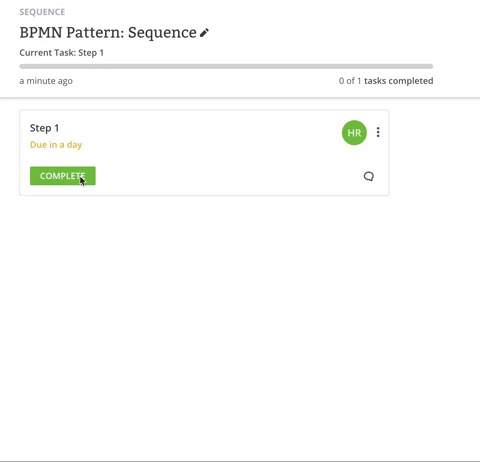
Parallel split
BPMN pattern description
After task A is completed, tasks B and C are to be completed concurrently.
(V1) B and C are to be completed together. (V2) B and C are to be completed.

Equivalent of pattern in Tallyfy
Once task A is completed, show/assign task B and C.
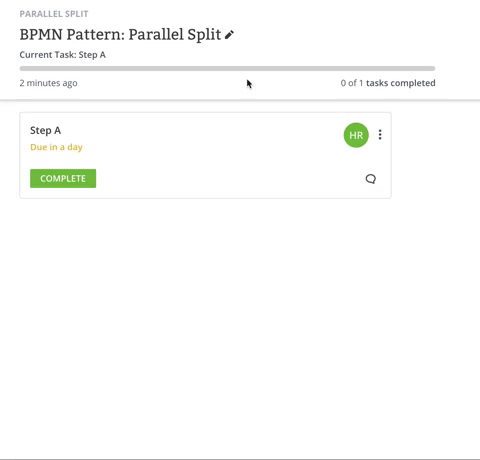
Synchronization
BPMN pattern description
After task A and B are completed, task C/D is to be completed.
(V1) once both A and B are completed together; (V2) once A and B are both independently completed.
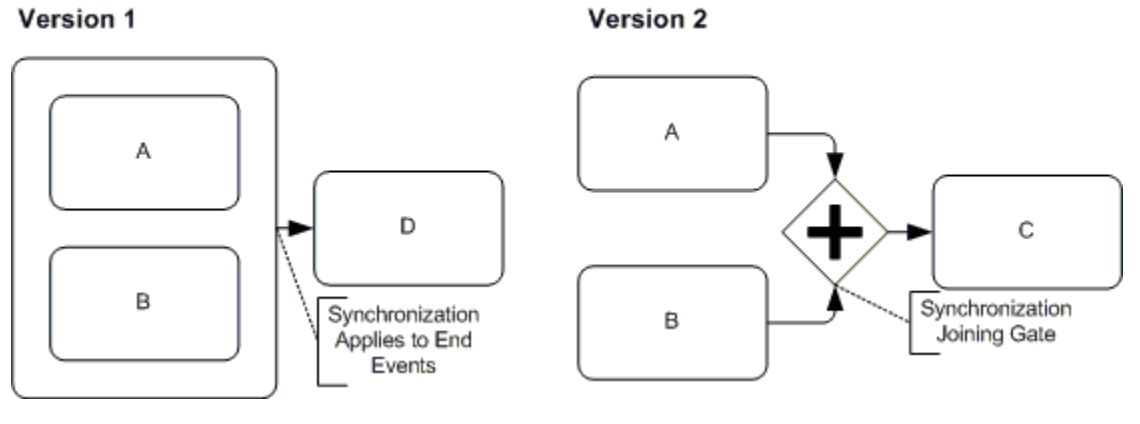
Equivalent of pattern in Tallyfy
Once task A and B are completed, show/assign task C/D.
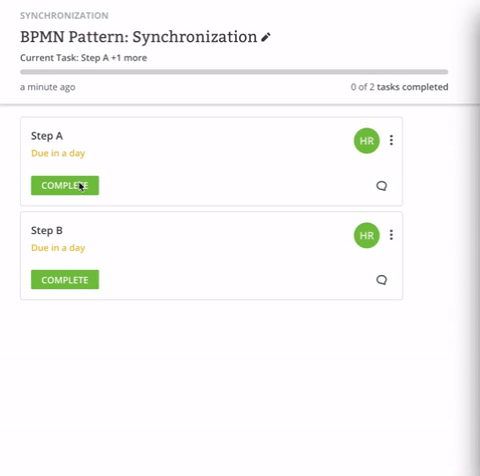
Decision and choice patterns
Exclusive choice
BPMN pattern description
Depending on information gathered in task A, either task B or C is to be completed.
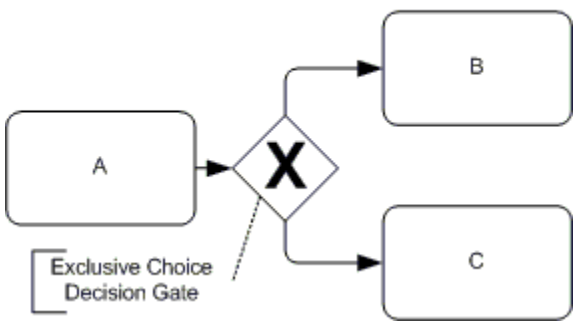
Equivalent of pattern in Tallyfy
If task A contains information X, task B is to be completed.
If task A does not contain X, task C is to be completed.
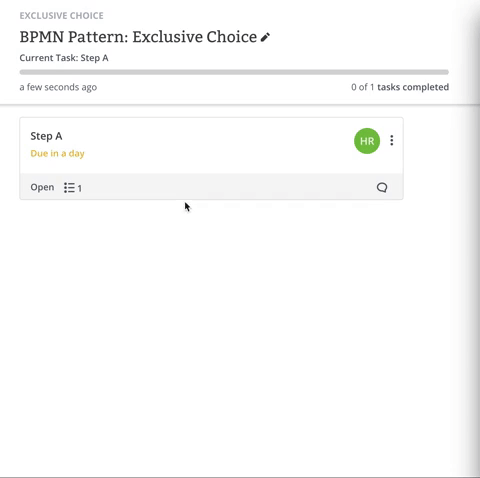
Simple merge
BPMN pattern description
After task A and B are completed, task C is to be completed.
(V2) Task C can only be started once both A and B are completed.
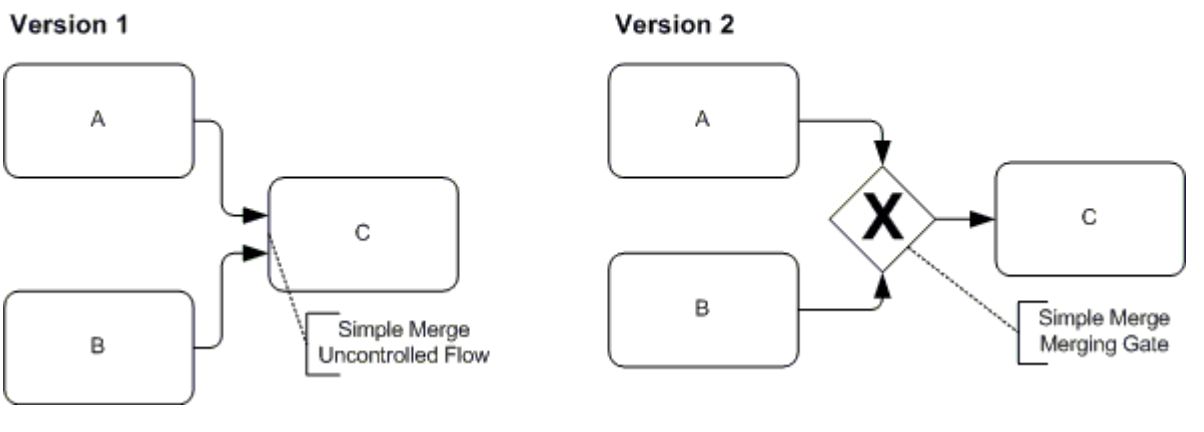
Equivalent of pattern in Tallyfy
(V1) Once task A and B are completed, show task C.
(V2) Once A or B is completed show C.
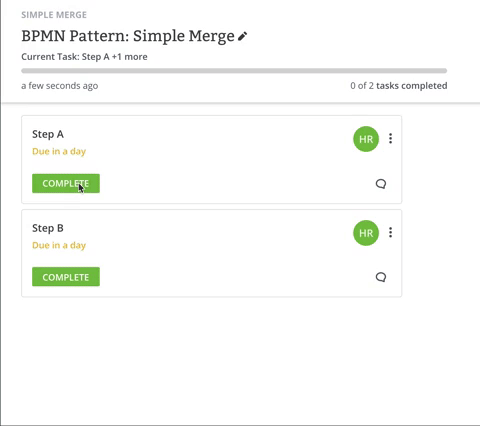
Multi-choice
BPMN pattern description
A decision made in task A leads to either task B or C.

Equivalent of pattern in Tallyfy
(V1) If task A contains B, show task B. If task A contains C, show task C.
(V2) A choice of either B or C is given in A. If B is selected show task B; if C is selected, show task C.
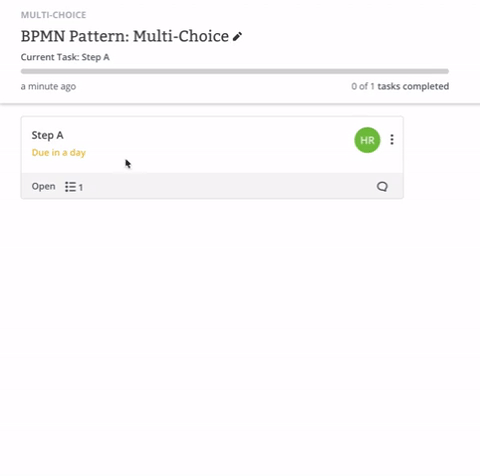
Deferred choice
BPMN pattern description
After A is completed, depending on outcome of event, B or C will be completed.
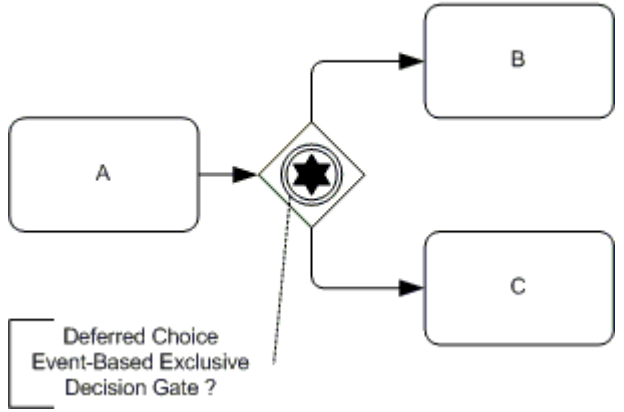
Equivalent of pattern in Tallyfy
After task A is completed, assign task X.
If task X response contains answer B, open task B. If task X response contains answer C, open task C.
Merge and join patterns
Discriminator
BPMN pattern description
After task A is completed, tasks B and C are to be completed, after which task D is to be completed.
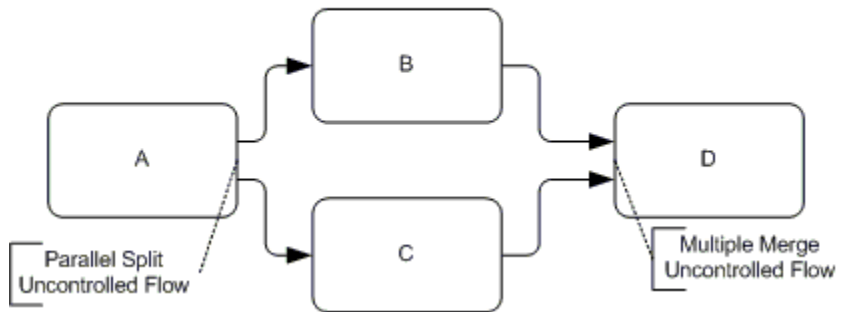
Equivalent of pattern in Tallyfy
After task A is completed, show tasks B and C.
After task B or C is completed, show task D.
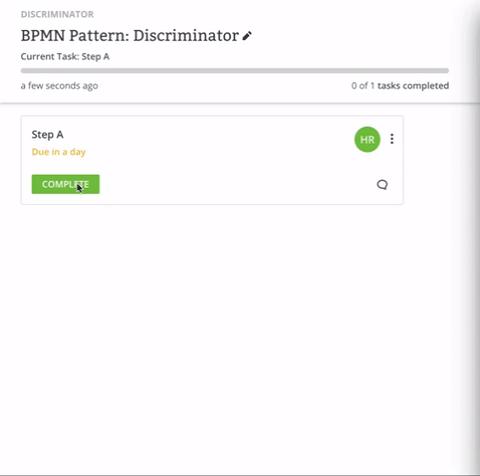
N out of M join
BPMN pattern description
After task A is completed, tasks B1, B2, and B3 are to be completed.
When either of the B tasks are completed, task C is to be completed.
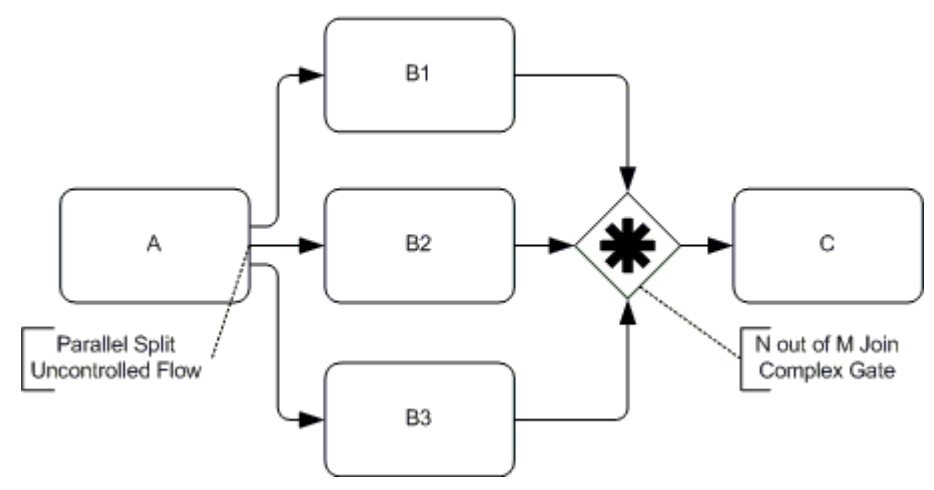
Equivalent of pattern in Tallyfy
After task A is completed, show tasks B1, B2, and B3.
After task B1, B2, or B3 is completed, show task C.
Note on issue - This would more easily work in Tallyfy if there was the ability to create two rules for one task: (when A is completed, show task B1. If task B2 or B3 is completed, hide task B1). We’re working on it.
Synchronizing merge
BPMN pattern description
After task A is completed, tasks B and C are to be completed.
When B or C is completed, task D is to be completed. (V2) B and/or C.
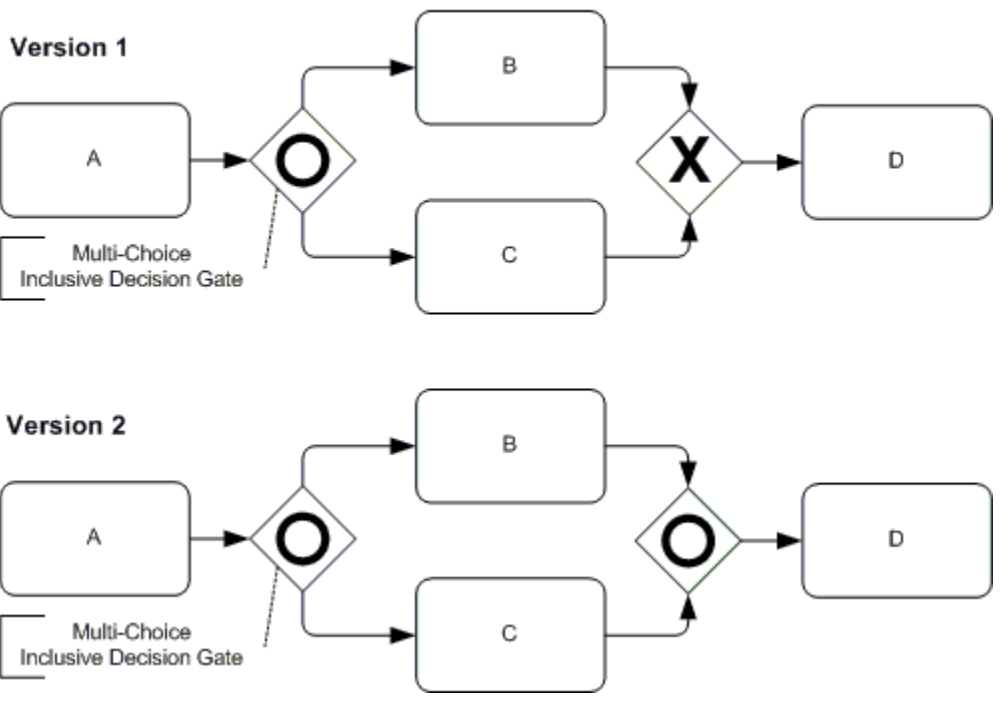
Equivalent of pattern in Tallyfy
After task A is completed, show tasks B and C.
After task B or C is completed, show task D and (V1) hide the other of B or C.
Complex routing and approval patterns
Interleaved routing
BPMN pattern description
After A is completed, depending on outcome of event, B or C will be completed.
After both B and C are completed, a choice is made between E and D.
If E is selected, E is completed, then D. If D is selected, D is completed, then E.
After D (after E) is completed, F is completed. After E (after D) is completed, G is completed.
After both F and G are completed, H is completed.
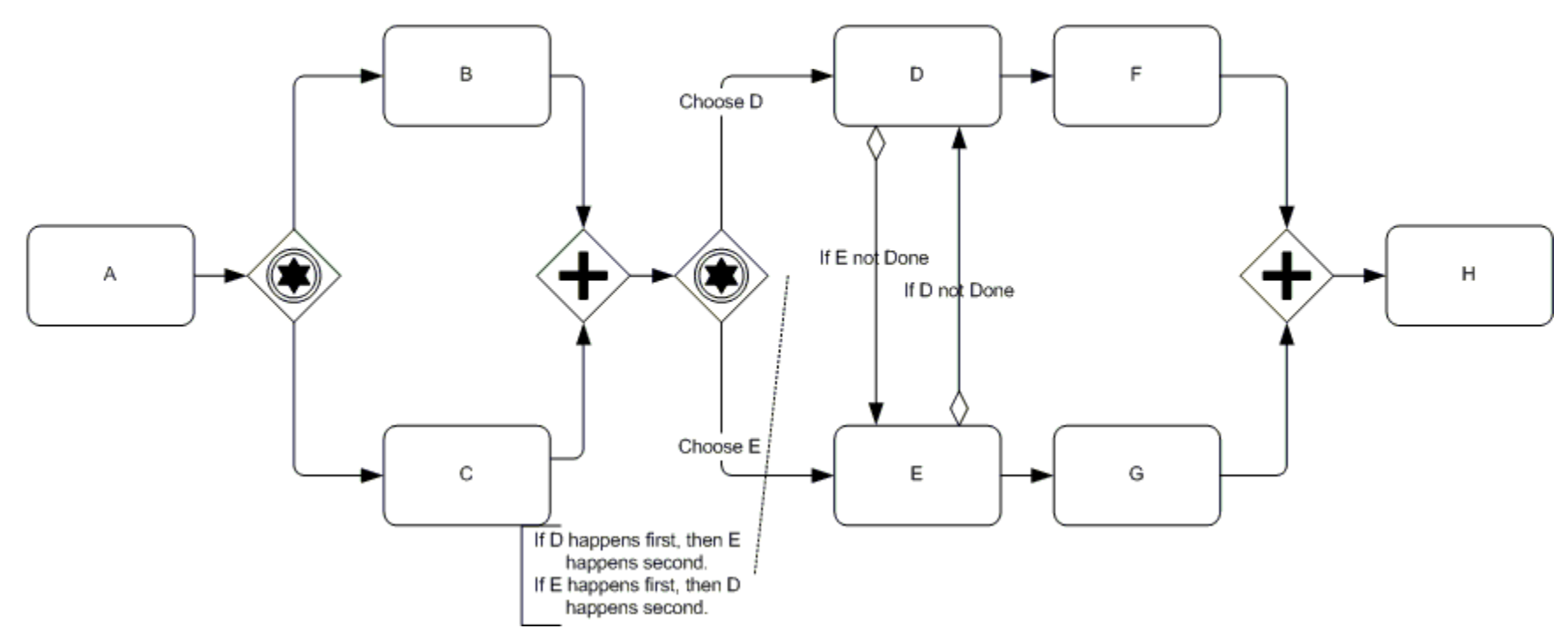
Equivalent of pattern in Tallyfy
After task A is completed, assign task X.
If task X response contains answer B, open task B. If task X response contains answer C, open task C.
After Tasks B and C are complete, open tasks D and E.
When tasks D and E are complete, open tasks F and G.
When tasks F and G are complete, open task H.
Note on issue. This does not completely replicate the diagram. To do that, you would need to be able to split a process into two processes, yet be able to have rules that make what happens in process one dependent on process two. We’re working on it.
Tiered approval
BPMN pattern description
Event in Step A has results 1, 2, and 3.
If event results in 1, Approval A is needed before proceeding to Step B.
If event results in 2, both Approvals A and B are needed before proceeding to Step B.
If event results in 3, Approval C is needed in addition to A and B before proceeding to Step B.
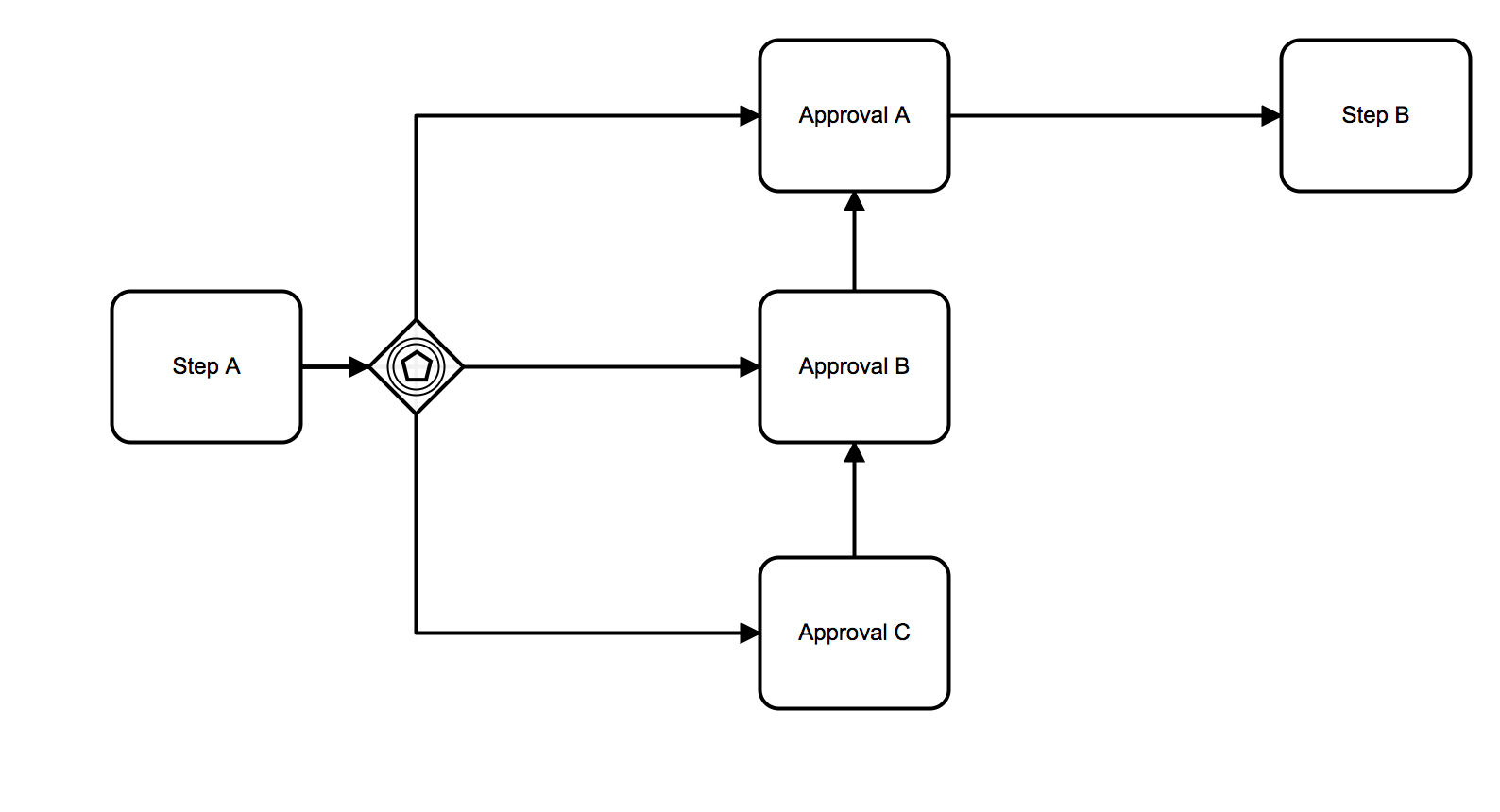
Equivalent of pattern in Tallyfy
When Step A is completed, open task Approval A.
If step A contains 2 or step A contains 3, open task Approval B.
If step A contains 3, open Approval C.
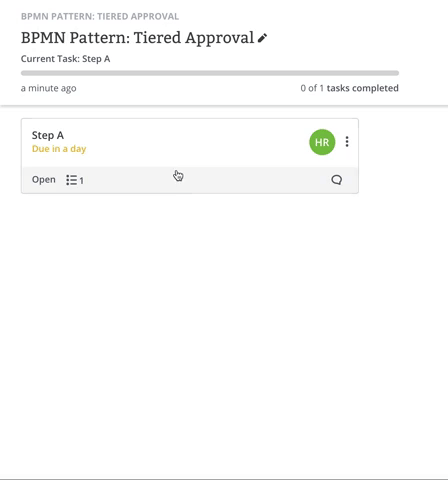
These approval patterns are where Tallyfy really shines compared to BPMN diagrams. Instead of drawing complex flowcharts, you can use ready-made templates that handle tiered approvals, conditional routing, and multi-level authorization right out of the box:
About the Author
Amit is the CEO of Tallyfy. He is a workflow expert and specializes in process automation and the next generation of business process management in the post-flowchart age. He has decades of consulting experience in task and workflow automation, continuous improvement (all the flavors) and AI-driven workflows for small and large companies. Amit did a Computer Science degree at the University of Bath and moved from the UK to St. Louis, MO in 2014. He loves watching American robins and their nesting behaviors!
Follow Amit on his website, LinkedIn, Facebook, Reddit, X (Twitter) or YouTube.

Automate your workflows with Tallyfy
Stop chasing status updates. Track and automate your processes in one place.